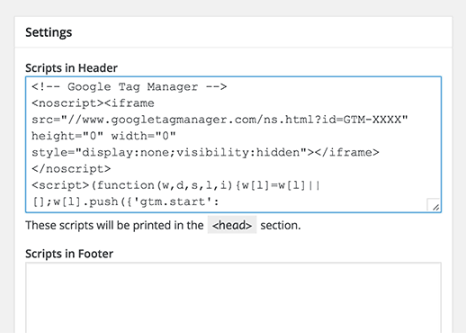The smart Trick of Google Analytics Event Tracking That Nobody is Discussing
Table of ContentsNot known Factual Statements About Google Analytics Event Tracking 5 Simple Techniques For Google Analytics Event Tracking6 Simple Techniques For Google Analytics Event TrackingThe Ultimate Guide To Google Analytics Event TrackingGoogle Analytics Event Tracking Things To Know Before You Get ThisThe Ultimate Guide To Google Analytics Event Tracking

If you're going to set up occasion monitoring by hand, then you're going to have to include some extra code to the components you want to collect information from. The code you're mosting likely to function with will look something similar to this: There are four components within that code fragment that you're going to require to specify on your own: event, Classification, event, Action, event, Tag and event, Worth.
As you can see, two of these are required (classification and action) while label and worth are optional. All of it depends upon the sort of info you desire relayed back to Google Analytics when a user clicks on the specified element (Google Analytics Event Tracking). It will be a lot easier to specify these parts if you evaluate your web site and choose which elements/actions you intend to track
5 Easy Facts About Google Analytics Event Tracking Explained
Currently, you'll be asked to specify the and and you'll intend to pick from the drop-down menu that shows up when you click on. This will certainly raise the very same event monitoring parts we took a look at earlier, which you'll need to submit. As soon as you have actually specified these, you can relocate down to the second box and select the trigger that will terminate your tag.
On the next display, you'll likewise have a field for naming your trigger and, if you click on the box, you'll see a listing of the different triggers you can choose. In this case, we intend to select and afterwards pick the alternative below. After that you'll set the trigger to only discharge when a component is clicked with an URL which contains the.
Every web site talks. Before information analytics, we could not hear the voices of our internet sites. Just how do you understand what your site is saying? Basic - Event tracking! Occasion tracking provides you a picture of how customers involve with your internet site and organization (Google Analytics Event Tracking). Do you want to know more? Then, read on as we explore whatever you require to know, including what it is, why you need to track occasions, exactly how to take care of events information, and various other appropriate FAQs you may have.
The Ultimate Guide To Google Analytics Event Tracking
You can change in between your event groups, actions, and labels in the Top Events report. The Occasion Pages record displays the web pages where occasions are caused.
It shows you the course they take as they relocate from one event to the following and helps you to establish which web content engages your target market one of the most. Occasions in Google Analytics have four major aspects. They are also a component of the event tracking code. Google Analytics makes use of these codes to track individual interactions and team them right into occasion reports.
A list of the specifications you can track on your site is on the. After checking all necessary areas, you can click "X" to close the home window and return to the Introduction food selection on the.
The Single Strategy To Use For Google Analytics Event Tracking

If you have not done so, you may require to establish up a variable in the Google Analytics Settings box. After this, enter your GA tracking ID in the Monitoring ID area.
To do this, follow the following series of actions: After setting up the areas, choose the "Triggering" section. When configuring your brand-new trigger, click the "+" switch, after that the "pencil" button, then pick your trigger kind.
How Google Analytics Event Tracking can Save You Time, Stress, and Money.

When it comes to recognizing which areas and components are have a peek here guiding clients with your conversion funnel, you still won't recognize. So, without event tracking, GA records will only count check outs as single-page sessions, even if individuals invest a great deal of time on one web page and involve with it significantly (and a bounce).
However just how does event tracking accomplish this?Single-web page sessions called bounces begin and wrap up on the same page. Without occasion tracking, GA will certainly classify a customer's check out as a bounce if they do not browse to one more page, regardless of exactly how they interact with it. As an example, a video-rich page can have a higher bounce rate if events are not tracked.
All About Google Analytics Event Tracking
However, for GA to take occasion hits into account when gauging bounce rates, you must select "Non-interaction occasion" as "False" during the GTM configuration. Setting "occasion objectives" with event activity is an excellent method click for more info to monitor individual tasks you worth very, such as brand-new lead entries or click a phone call to activity.